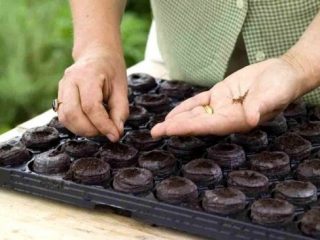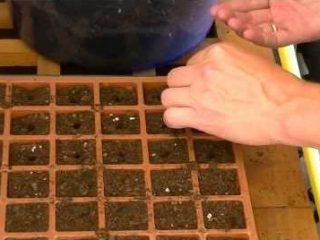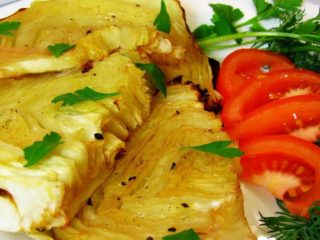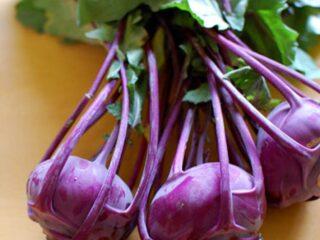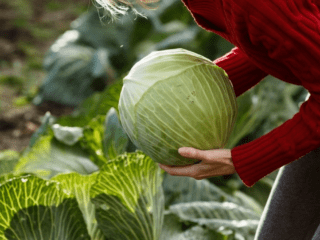Content
Any plant reacts to temperature changes, frosts are especially dangerous. Therefore, gardeners often wonder about the minimum thermometer readings for vegetable crops. For example, many people are concerned about what temperature cabbage can withstand and what to do if it is frozen.
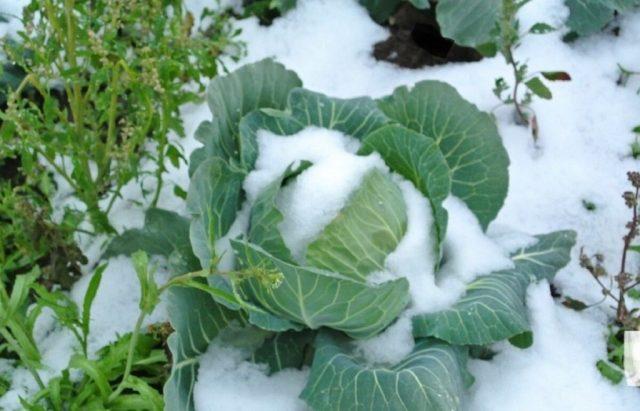
Each type of cabbage reacts differently to temperature changes
Comfortable temperature for cabbage
For the development and healthy growth of cabbage, it needs to provide suitable conditions. These include temperature conditions. The range from +12 to +24 ºC is considered favorable.
Cabbage seeds germinate at temperatures from +20 to +22 ºC in 3-5 days; if the indicator is lower, then seedlings may appear in a week. For further development, it is advisable to move the seedlings to a place with a temperature of +8-12 ºC.
Before planting in open ground, seedlings are hardened by taking them outside.Under this condition, young cabbage can easily withstand short frosts down to -5 degrees in the garden.
What sub-zero temperatures can standing cabbage withstand?
Depending on the variety, cabbage can withstand different sub-zero temperatures. White and red cabbage representatives of the culture, with preliminary hardening of the seedlings, can easily tolerate short-term frosts. Chinese cabbage also withstands low temperatures well, but cauliflower is less resistant.
What kind of frost can white cabbage withstand?
White cabbage can easily withstand freezing temperatures. It can easily withstand up to -5 ºC during the development period. At a lower rate, its yield may be reduced.
If, after transplanting into open ground, the seedlings were subjected to spring frosts (they are also called return frosts), this can affect the plant as follows:
- if there are 1-2 leaves on a seedling, they do not lead to deformation of the plant, but significantly reduces immunity;
- in the 2-4 leaf phase undergoes yellowing if exposed for more than eight hours;
- seedlings that are not hardened may die.
In autumn, frosts cause little damage to cabbage. Winter-hardy species, as well as mid- and late-ripening varieties, are practically not exposed to low temperatures. When the head of cabbage is formed, cabbage can tolerate down to -7 ºC without any consequences.But it is worth considering that the harvest harvested before the onset of the first frost will be of higher quality, in contrast to the one that was subject to freezing (the taste deteriorates, the shelf life decreases).
If the temperature drops below -7 ºC, then the head of cabbage completely freezes, which makes it unsuitable for long-term storage.
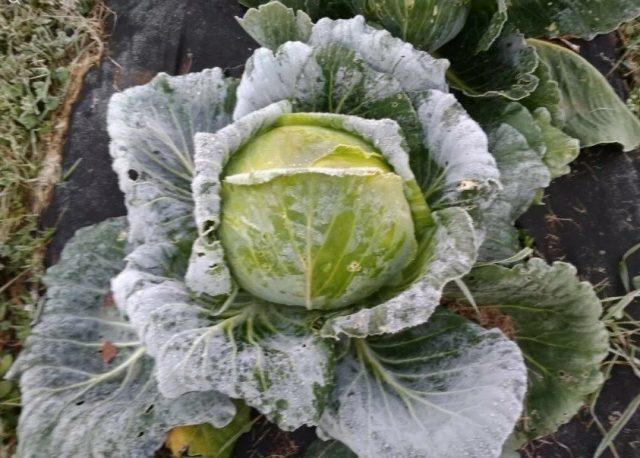
Since white cabbage tolerates frost well, it is grown in almost all regions of the country.
What is the minimum temperature that cauliflower can withstand?
Cauliflower is also a cold-resistant garden plant, but compared to white cabbage, it does not tolerate spring and autumn frosts well.
Seed germination occurs at a temperature of +20 ºC. Cauliflower develops and grows well at temperatures of no less than +15 and no more than +25 ºC. The minimum indicator of frost resistance at any stage of development is located at -2 ºC; if the temperature is lower, deformation of the plant leaves occurs. Cauliflower is very afraid of frost in the fall, it loses its presentation.
What temperature can Chinese cabbage withstand?
Peking cabbage, like white cabbage, is considered frost-resistant. But still, prolonged exposure to sub-zero temperatures affects the quality of the crop. After frosts below -4 ºC the plant begins to rot. Gardeners even recommend harvesting during the period when the thermometer reading does not drop below -2 ºC.
The effect of low temperature on seedlings in spring
Cabbage is grown using the seedling method to obtain an earlier harvest.But in order for the seedlings to successfully take root after transplanting into open ground, it is necessary to carry out proper hardening.
To make the seeds germinate faster, they are placed in a room with a temperature ranging from +20 to +24 ºC. As soon as the first shoots have appeared, it is recommended to keep them at +15 ºC during the day, and about +8-10 ºC at night. Before planting in the garden, seedlings begin to be taken outside two weeks, increasing the time daily. Under such conditions, the sprouts are hardened, which will allow them to not be afraid of return frosts after transplantation.
How to protect cabbage from frost
If there is a risk of severe frost in the growing region, then gardeners try to take all measures to protect the plants. Cabbage can also be protected from exposure to low temperatures; various methods are used for this. The simplest is considered to be thermal insulation of plantings, where they use:
- non-woven covering material - it is usually used when there is a risk of the temperature dropping to -10 ºC;
- plastic bottles - help protect seedlings from frost down to -8 ºC;
- cardboard, thick fabric - used if the thermometer does not drop below -4 ºC.
The second method is sprinkling. It is performed by watering around the bushes. This makes it possible to provide a water barrier, which, when cold weather sets in, begins to freeze out, releasing thermal energy.
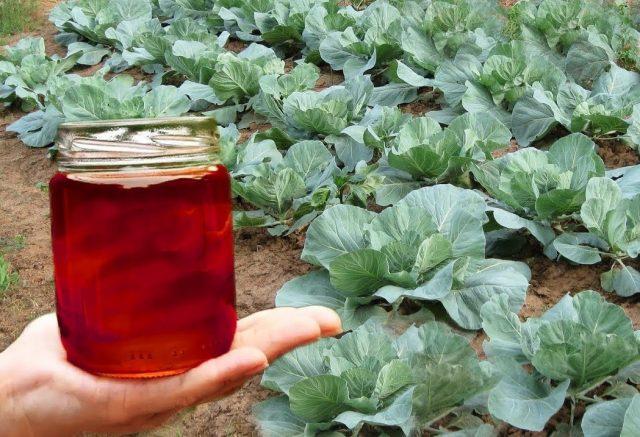
Fertilizing with sprinkling increases the plant's resistance to cold
There is also a third method - smoking. It consists of lighting fires at different points on the site.The smoke that will spread from an open fire will become a kind of curtain against the low temperature. Smoking is also carried out exclusively in calm weather. The method is considered effective only at -2 ºC. Therefore, today it is rarely used, since it has been proven that it is unsafe and not environmentally friendly.
What to do if cabbage is frozen in the cold
If cabbage seedlings are frozen, you should not panic and throw away the seedlings; you can try to revive the plants. In this case, it is important not to subject cabbage seedlings to sudden thawing, as this is detrimental to them. The seedlings are taken out into the sun early in the morning and watered with cool water to allow natural thawing to occur. For effectiveness, you can spray with special antidepressants.
If the cabbage froze in the fall in the garden at sub-zero temperatures, when the harvest was not harvested in time, then you should not immediately cut off the heads of cabbage. It is best to let the plant thaw on its own in the garden. In this case, the culture will be able to recover, the taste will remain unchanged. And after the heads of cabbage have regained their original properties, the harvest can be carried out.
Temperature for long-term storage
Not all varieties of cabbage are suitable for long-term storage. As a rule, mid-late and late species of cabbage are kept for reserve. Harvesting takes place from late September to early October. Then the heads of cabbage are prepared for winter storage. They are dried and hung (can be laid on a wooden floor) in the cellar.The optimal temperature for long-term storage is considered to be 0-1 ºC, for a period of 6-8 months.
You can place the heads of cabbage in a refrigerator, where the temperature varies between +2-6 ºC, and the period is reduced. They are stored in such conditions for no more than four months.
Conclusion
Cabbage in the garden can withstand sub-zero temperatures without loss of quality only if the seedlings have been previously hardened. Otherwise, even -2 º C can be detrimental to a garden plant. Also, the frost resistance of the crop directly depends on the selected variety.

